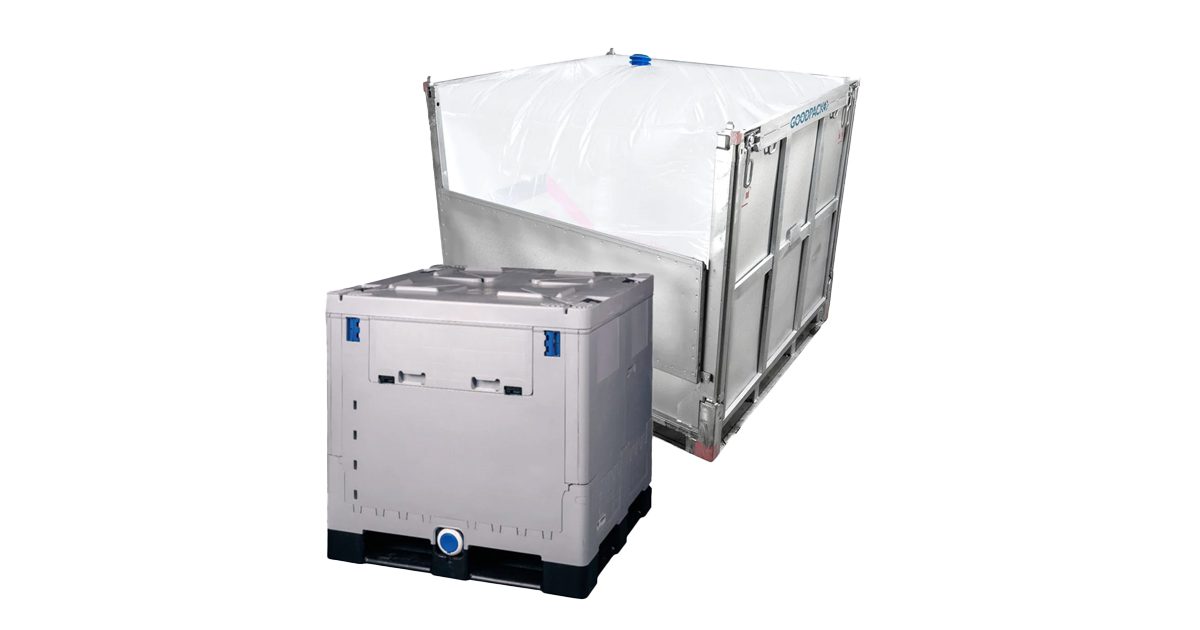When it comes to transporting and storing liquid food products, the packaging system you choose can make all the difference in efficiency, safety, and product quality. Traditional containers such as drums, tanks, and totes have been used for decades, but advancements in liner technology have made Intermediate Bulk Containers (IBCs) with liners a superior option.
In the food and beverage industry, IBC Packaging for Food and IBC Packaging for Beverage applications have revolutionized bulk transport by offering hygienic, space-saving, and cost-effective solutions. Food-grade IBC liners provide a sterile, protective barrier inside the container, keeping products safe from contamination and eliminating the need for time-consuming cleaning processes.
As a result, more manufacturers and distributors are replacing traditional containers with IBC systems that use liners. The following explores the many advantages of this modern approach to bulk liquid packaging.
Improved Hygiene and Food Safety
One of the primary reasons IBC liners have become the industry standard is their ability to maintain the highest level of hygiene. In traditional containers, even with regular cleaning, there’s always a risk of residue buildup, bacterial growth, or chemical contamination. Liners remove that concern entirely by creating a disposable or replaceable layer between the liquid and the container walls.
Food contact safe IBC liners are made from FDA-approved materials, ensuring compliance with all food-grade regulations. They are designed to be inert, meaning they do not react with the contents or affect taste, color, or texture. This makes them ideal for sensitive applications such as dairy, juice, edible oils, and flavor concentrates.
By using food & beverage bulk container liners, companies eliminate the risk of cross-contamination between batches. Each liner is clean, sterile, and ready to use, reducing dependence on washing chemicals and saving both time and resources.
Cost and Labor Efficiency
Traditional metal or plastic containers require extensive cleaning and inspection before reuse. This process consumes water, labor, and energy—resources that add up over time. IBC liners significantly reduce these operational costs.
Once a shipment is completed, the liner can be easily removed and replaced. This allows the outer IBC container to be reused immediately without any downtime for cleaning or sterilization. The efficiency gained from this process translates into faster turnaround times and greater productivity in high-volume operations.
Additionally, liners help extend the lifespan of the IBC container itself. By preventing contact with harsh liquids or chemicals, liners reduce wear and tear, minimizing maintenance costs and prolonging the usability of the outer container.
Space and Transportation Advantages
When compared to drums or rigid tanks, IBCs with liners offer superior space efficiency. Their cubic shape maximizes storage and transport capacity, allowing businesses to move more product per shipment. This optimization can lower overall shipping costs and improve supply chain logistics.
Empty IBC liners take up minimal space and can be easily stored or transported, unlike bulky, rigid containers that require significant warehouse area. This flexibility supports more efficient inventory management and helps facilities maintain cleaner, more organized workspaces.
Environmental Benefits
Sustainability is a growing priority for the food and beverage industry, and IBC liners align perfectly with that goal. While the liners themselves are typically single-use, the outer IBC containers are reusable, reducing packaging waste. Many liners are also recyclable, depending on local regulations and material types.
By reducing the need for cleaning chemicals and wastewater associated with traditional container cleaning, IBC systems help companies lower their environmental footprint. They contribute to sustainable production practices without sacrificing product safety or efficiency.
Compatibility With a Wide Range of Products
Another advantage of IBC liners is their versatility. They can safely handle a broad variety of liquid food and beverage products, including high-acid, high-fat, or temperature-sensitive liquids.
-
IBC liners for dairy products maintain the hygiene required for milk, cream, and whey-based ingredients.
-
Bulk edible oil container liners prevent oxidation and protect against leaks, preserving product quality.
-
IBC Liners for Juice & Concentrates safeguard fruit juices, purees, and flavor bases from oxygen exposure and contamination.
Whether transporting viscous syrups, delicate juices, or oils with unique handling requirements, liners are engineered to match specific material and performance needs.
Simplified Compliance and Quality Control
In food manufacturing, compliance with regulatory standards is non-negotiable. FDA-Compliant Bulk Liquid Packaging ensures that all materials used in IBC liners meet strict guidelines for safety, cleanliness, and traceability. Each liner batch can be documented for audits, giving producers confidence in their packaging integrity.
Because liners reduce human handling and cleaning steps, they also minimize the potential for process errors or quality control failures. This simplifies internal procedures while ensuring consistent results across shipments.
Product Protection and Shelf Life Extension
Traditional containers are more prone to oxygen ingress, moisture exposure, and contamination from external elements. Modern IBC liners, on the other hand, are often constructed with multiple layers of high-performance films that provide superior barrier protection.
These films maintain a stable environment for liquids, preventing spoilage or chemical degradation. This feature is particularly beneficial for products like fruit concentrates, oils, and beverages that can lose quality when exposed to air or light.
Operational Convenience and Safety
Liners make filling and dispensing more efficient and less labor-intensive. They can be designed with various fitments and valves compatible with automated systems, reducing manual handling and the risk of spills or accidents.
In contrast, traditional containers often require manual cleaning, lifting, and handling, which can increase workplace hazards and slow down production lines. The use of liquid food packaging solutions like IBC liners helps streamline these operations while improving worker safety and comfort.
Supporting Modern Food Industry Standards
As food logistics become more global, the need for reliable, sanitary, and cost-effective packaging solutions continues to grow. IBC Packaging for Food and IBC Packaging for Beverage applications meet these evolving demands by combining durability with compliance and sustainability.
They offer a practical way to transport bulk liquids safely across long distances while maintaining freshness and quality. For manufacturers, distributors, and processors alike, liners represent the next generation of safe and efficient food packaging.
For an in-depth look at how IBC systems compare to traditional methods, explore the Complete Guide To Food & Beverage IBC Packaging Solutions. This resource covers material options, compliance standards, and best practices for optimizing bulk liquid packaging in the food sector.
Partner With Innovative Liner Solutions
Innovative Liner Solutions provides high-performance food-grade IBC liners that meet the stringent requirements of the global food and beverage industry. From dairy and edible oils to concentrates and syrups, their liners are engineered to deliver consistent performance, safety, and cost savings.
To learn more about switching from traditional containers to efficient, sanitary IBC liner systems, call (815) 963-9525.


